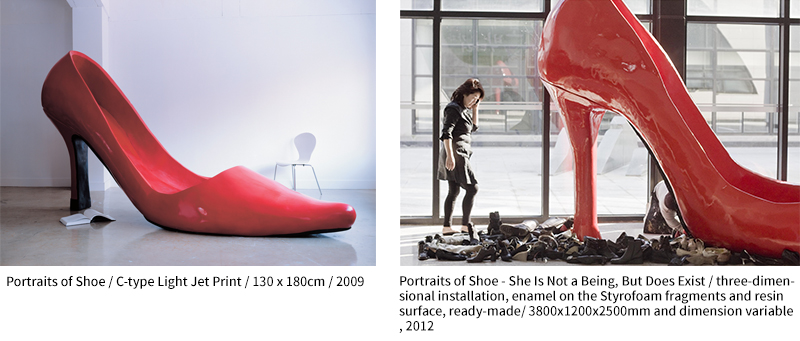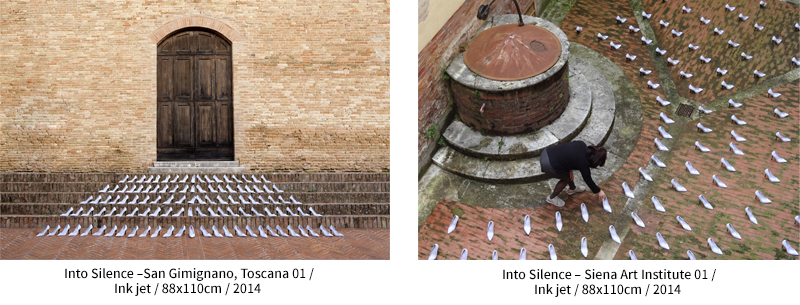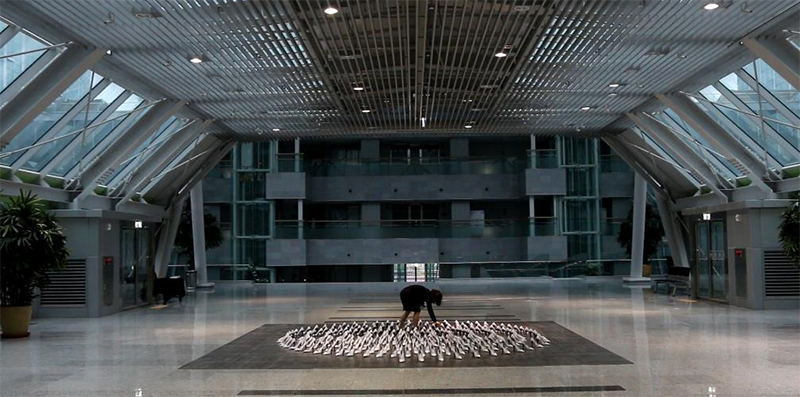Maelee Lee On the Road to Wisdom, Richard Vine
관련링크
본문
Maelee Lee: On the Road to Wisdom
By Richard Vine
A journey of a thousand miles begins with a single step. So runs the old Chinese adage that seems to hover in the background of Maelee Lee’s new multi-site project in Korea. Her work has always, to a certain extent, been about travel — mental as much as physical, though time as well as space. But what was previously a generalized, abstract meditation on the self in transit from one locale, and one state of being, to the next has now planted its feet firmly on the earth, so to speak, grounding the viewer’s experience in a specific cultural history: the intellectual heritage of Jeong Yak-yong (1762-1836), an esteemed Joseon Dynasty poet, scholar, civic administrator, royal adviser, and philosopher.
At first glance, this might seem an unlikely choice for Lee. Holding an MFA and a PhD in fine arts from Chosan University in Gwangju, the artist has, over the last 15 years, developed a distinctly contemporary style. Creating small sculptural vignettes and large-scale installations — most of them involving at least one high heel shoe that serves as her personal surrogate — Lee then photographs and/or videotapes the ensemble, thereby vastly increasing the potential reach and distribution speed of her work but also problematizing its nature. Is her art the object or the image, the assemblage or the idea? Perhaps it is both at once, an aesthetic composite that parallels the psychological dualism of her theme: a woman contemplating her own social and psychic construction as a woman.
This ontological conundrum is, of course, not unique to Lee. One encounters it, in a recent and more blatant form, in the dress-up fantasies of Cindy Sherman. Moreover, the “what is the work?” debate runs back through Conceptualism to that movement’s fountainhead, Marcel Duchamp, and farther still into the reaches of history. It connects to the Platonic dichotomy of material form vs. Ideal Form and even to the primitive distinction between the ritual object and the spirit that inhabits it, the idol and the god.
Little wonder, then, that Lee has made the evocation of infinite regression one of her most fruitful devices. In her “Absolute Space” series (2011), she variously juxtaposes three elements: a high heel shoe, a box structure with multiple concentric window-like cutouts, and — beyond the last aperture — an open book. The viewer, reminded how various frames of reference alter perception and meaning, is simultaneously drawn inward, deep into the text and the private domain of interpretation, and propelled outward toward the social sphere of high fashion footwear.
To step in or step out? This is the dilemma faced by every modern woman and by every artist (who, as Thomas Mann so memorably put it, must repeatedly choose between immersing oneself in everyday life or turning one’s back on reality in order to produce the art that reflects and immortalizes it). In Lee’s 2011 series of painted photographs “Between Real and Ideic Space,” seascapes and distant mountains, both common symbols of departure and contemplation, are combined with mutely toned rectangles and passages of printed text — filters that are placed immediately before one’s eyes but can nonetheless, like traditional Eastern screens bearing wistful painted scenes, offer imaginative passageways to the viewer’s interior.
Lee’s use of the high heel shoe — in “pure” white, avaricious gold, or brashly sexy red — is often seen as an assertion of female identity and power, especially when, in instances like Portrait of a Shoe (2009), the object assumes giant, Claes Oldenburg-esque proportions. One should note, however, that it is only the habitually oppressed or ignored who need to proclaim their presence in such an insistent manner. (Thus, for example, the desperate swagger of hip-hop.)
Lee’s art lies as much in pinpointing the continued subjugation of women (still widespread, though grown more subtle) as it does in providing a confidence-building social response. Yes, Lee seizes the high heel fetish, making it her own — thereby “owning” it rather than being owned by it — but that very gesture of appropriation bespeaks an ongoing chauvinism that is yet to be broken.

In May 2014, Lee will do likewise in her native country, tracing an itinerary from Dasan Chodang, the simple house that Jeong Yak-yong occupied in the provincial southwest during an 18-year banishment from the center of government, to the National Assembly of the Republic of Korea, in present-day Seoul. Given that Jeong Yak-yong (also known as Dasan) was a prolific Aristotle-like polymath, Lee’s project is, in effect, a journey from a seat of wisdom to a seat of power.
The stops will be determined as the process evolves, but some of the primary targets are: the road between Dasan Chodang and Baekryeon Temple, home to Dasan’s great friend, the venerable Buddhist monk Hye Jang; the lecture room of the Confucian scholar Gi Dae-Seung (1527-1572), whose work was a great influence on Dasan; and the tomb of King Jeongjo, whom Dasan served before the monarch’s death in 1800.

Lee’s “Road Project” suggests, then, that Jeong Yak-yong’s “practical” philosophy — based on fundamental Confucianism, tinged with Christian values, respectful of longstanding rituals, and much concerned with personal comportment, good governance, and the amelioration of poverty — should ideally migrate from the distant past to the contentious present. Thus would it carry the issue of female identity, and many other pressing moral concerns, from the realm of theory to the arena of pragmatic laws and public behavior, from a sage’s former hermitage to the nation’s active legislature.

